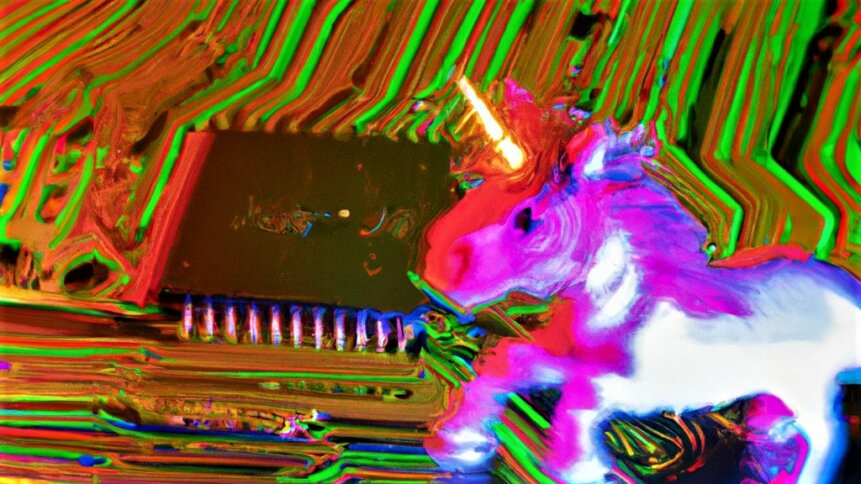China, memory chips, and unicorns

|
Getting your Trinity Audio player ready...
|
• Micron chips face ban in China based on security review
• China’s unicorns thriving in areas such as semiconductors
• Long history of licensing and acquisition in memory chip sector
A brief statement by China’s Cybersecurity Review Office has put semiconductors back in the news with fears of a ramp-up in the chip trade war between China and US superpowers. And there’s much to digest in this industrial theatre as TechHQ considers China, memory chips, and unicorns.
China’s unicorns (private companies valued at over US $1 billion) are thriving, including in areas such as semiconductors. And it’s not the first time that Micron has come under scrutiny from regulators. In 2018, a dispute over IP complicated the US-headquartered memory chip maker’s sales ambitions in Asia.
But there are some key differences between now and then, including in the makeup of China’s unicorn landscape. In a recent edition of Drum Tower (a fascinating podcast series focusing on China’s changing role in the world), Don Weinland – the Economist’s China business and finance editor – points out that back in 2017, Chinese unicorns were focused in e-commerce and consumer internet. But today, that’s changed.
“The number of e-commerce companies within the group has gotten smaller; some industries have been completely wiped out. Fintech has gotten much smaller; education tech has completely disappeared,” comments Weinland in the May 23 episode. “All of the new activity is pretty much concentrated in areas that the government favors or has been favoring over the past couple of years. These are semiconductors, artificial intelligence, robotics, health tech, green technology and new energy.”
US should add Chinese chip firm CXMT in retaliation for Micron ban
In the first proposed retaliatory action, the Chairman of the House Select Committee on China points at Chinese memory chip maker Changxin Memory Technologies (CXMT).#China #Beijing #semiconductor #chiproar… pic.twitter.com/PbE1p7bkj9
— Spotlight on China (@spotlightoncn) May 25, 2023
Weinland, one of just a few foreign business correspondents still to be based in mainland China, notes that the state is much more involved in this latest crop of companies. State-owned enterprises are more invested in start-ups and helping them grow – a trend that wasn’t as strong five years ago. But that’s not to say that the state is the only influence in their growth – the market is a factor too.
China’s aspiration for a national greatness and security economy is no secret, as its leaders look to steer the nation towards the top in highly-prized industrial areas such as semiconductors and robots. And this means that the so-called ‘disorderly flow of capital’ into activities that don’t chime with those ambitions is frowned upon and viewed in some quarters as a waste of money.
China, memory chips, and unicorns
The Chinese communist party sets the direction of travel. And its tech ambitions have a habit of provoking responses from other nations. “Probably the hottest industry right now in Chinese technology, or the one that the government is focusing on the most, is semiconductors,” Weinland told Drum Tower listeners.
This planned growth in activity is focused on giving China independence from nations that currently lead the way in the design and manufacture of advanced chips. Just five years ago, China didn’t – according to the analysis of Weinland and colleagues – have a single start-up valued at over a billion dollars making semiconductors.
But by 2022, there were over 30 unicorns based in the PRC that fell into this category (apparently a state-published list that says the number is 50). And the key question will be how those semiconductor unicorns contribute to China’s national greatness economy.
Changxin Memory Technologies success
High on the list of growing success stories is Changxin Memory Technologies (CXMT), which – according to Bloomberg – plans to file for a domestic IPO in 2023. As of April, CXMT was selecting underwriters. And the Chinese producer of memory chips could list on the Shanghai Stock Exchange Science and Technology Innovation Board (commonly referred to as the Shanghai STAR board and likened to America’s NASDAQ) at a valuation of no less than 100 billion yuan ($14.5 billion), based on Bloomberg sources.
AnandTech has some great reporting on CXMT’s history and notes that CXMT (originally known as Innotron) was founded in 2016. Intriguingly, IP for the Chinese memory maker appears (from slides included in the AnandTech write-up) to be licensed from Qimonda, which would make for an interesting technology platform considering the recent comments from China’s Cybersecurity Review Office.
Qimonda, which back in the day was a German producer (spun out of Siemens AG) of consumer DRAM, graphics RAM, mobile RAM and Flash memory, had assets in Inotera – a Taiwanese DRAM memory manufacturer. And guess who bought Qimonda’s $400 million stake in Inotera – Micron Technologies.
CXMT and Micron’s paths cross elsewhere too. A 2020 news report from Digitimes quoted that ‘Micron Technology has expressed its concerns to DRAM module manufacturers that chips developed by China-based ChangXin Memory Technologies (CXMT) may violate its patents’.
It would certainly be a strange state of affairs if China’s Cybersecurity Review Office bans Micron’s chips based on unspecified ‘serious hidden dangers of cybersecurity problems’, which its experts believe could pose a major security risk and could affect national security. And then CXMT’s designs turned out to be part of the same technology family tree, so to speak. But we live in a strange world, memory chip maneuvers included.









